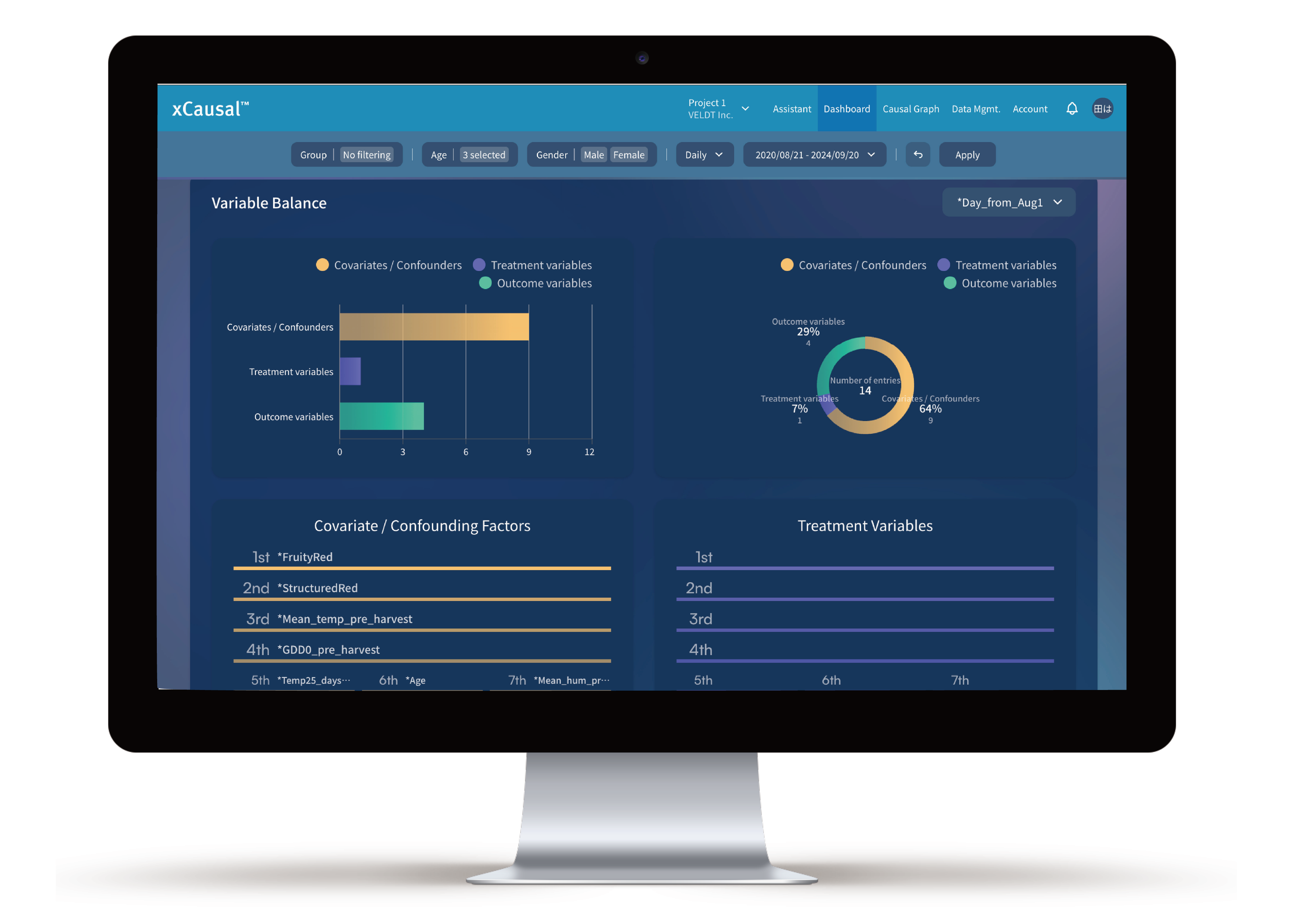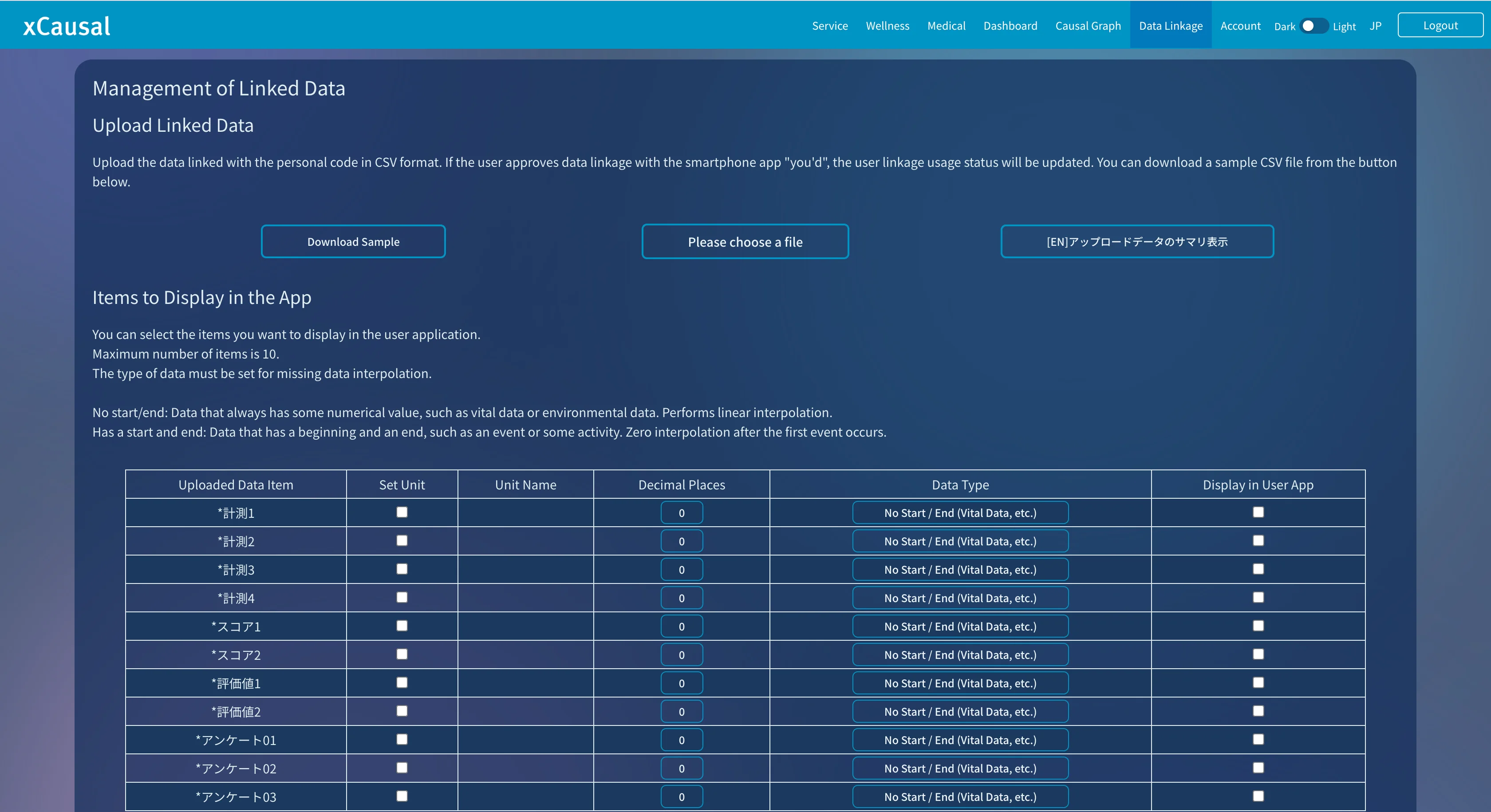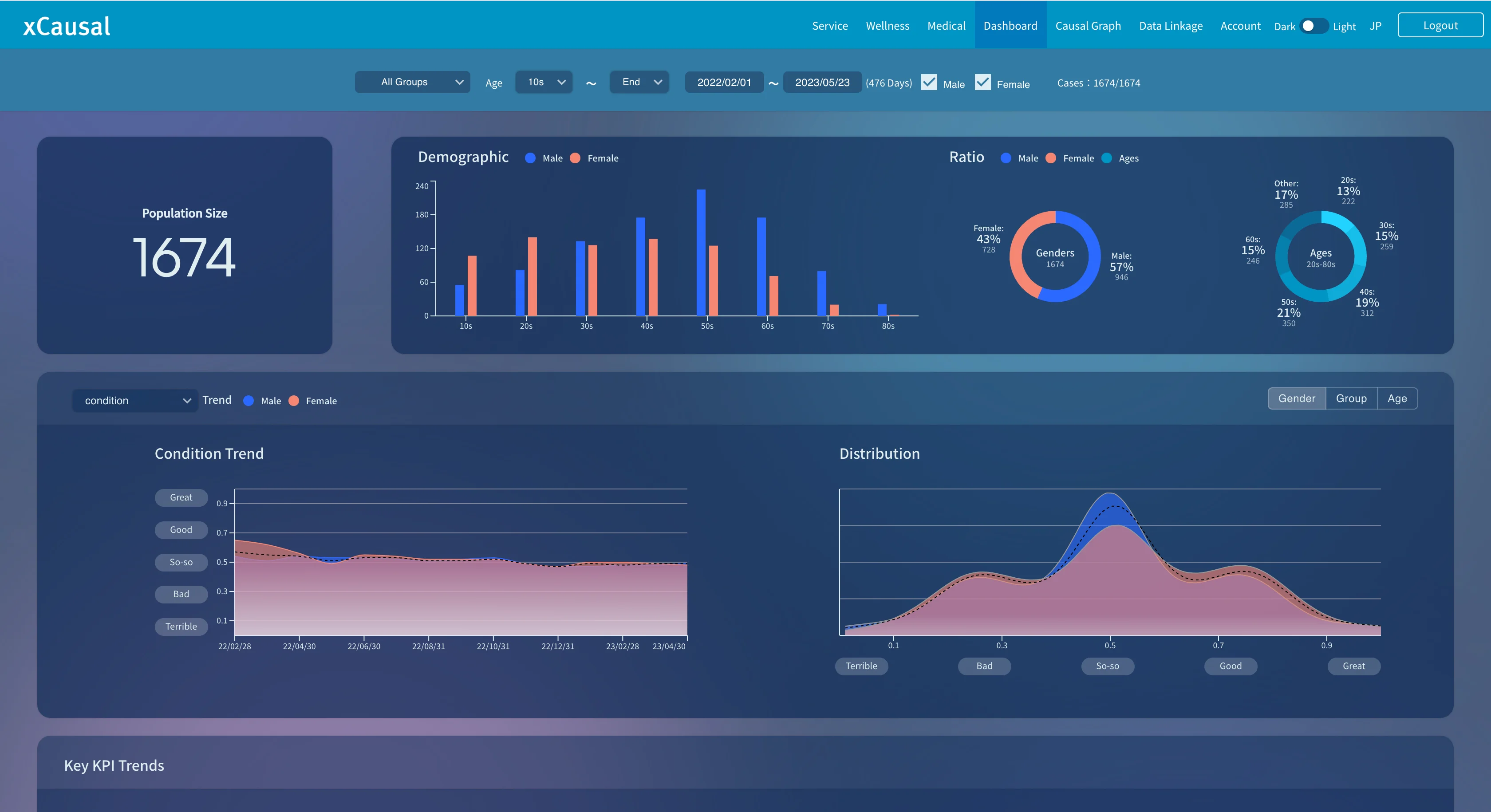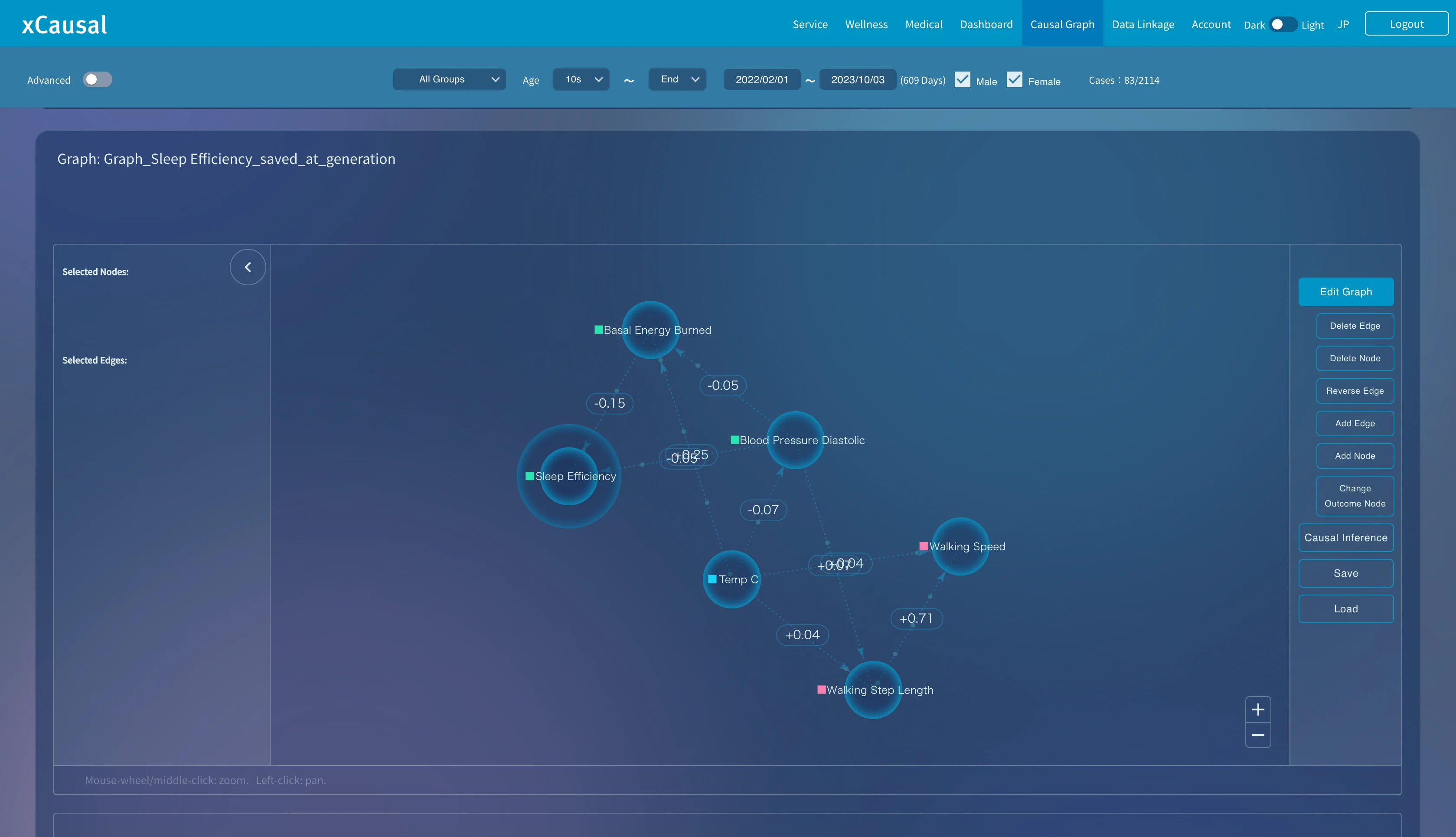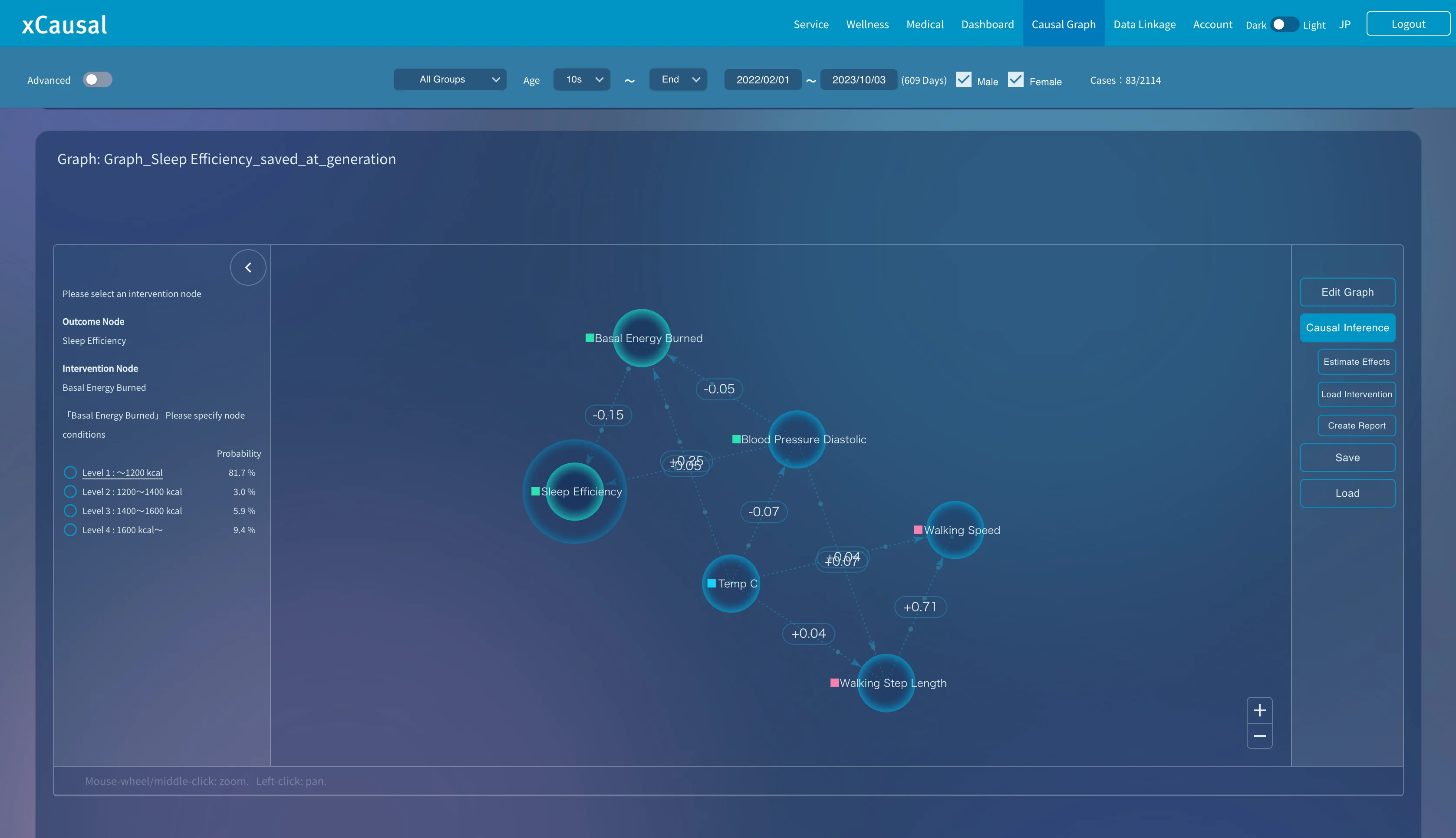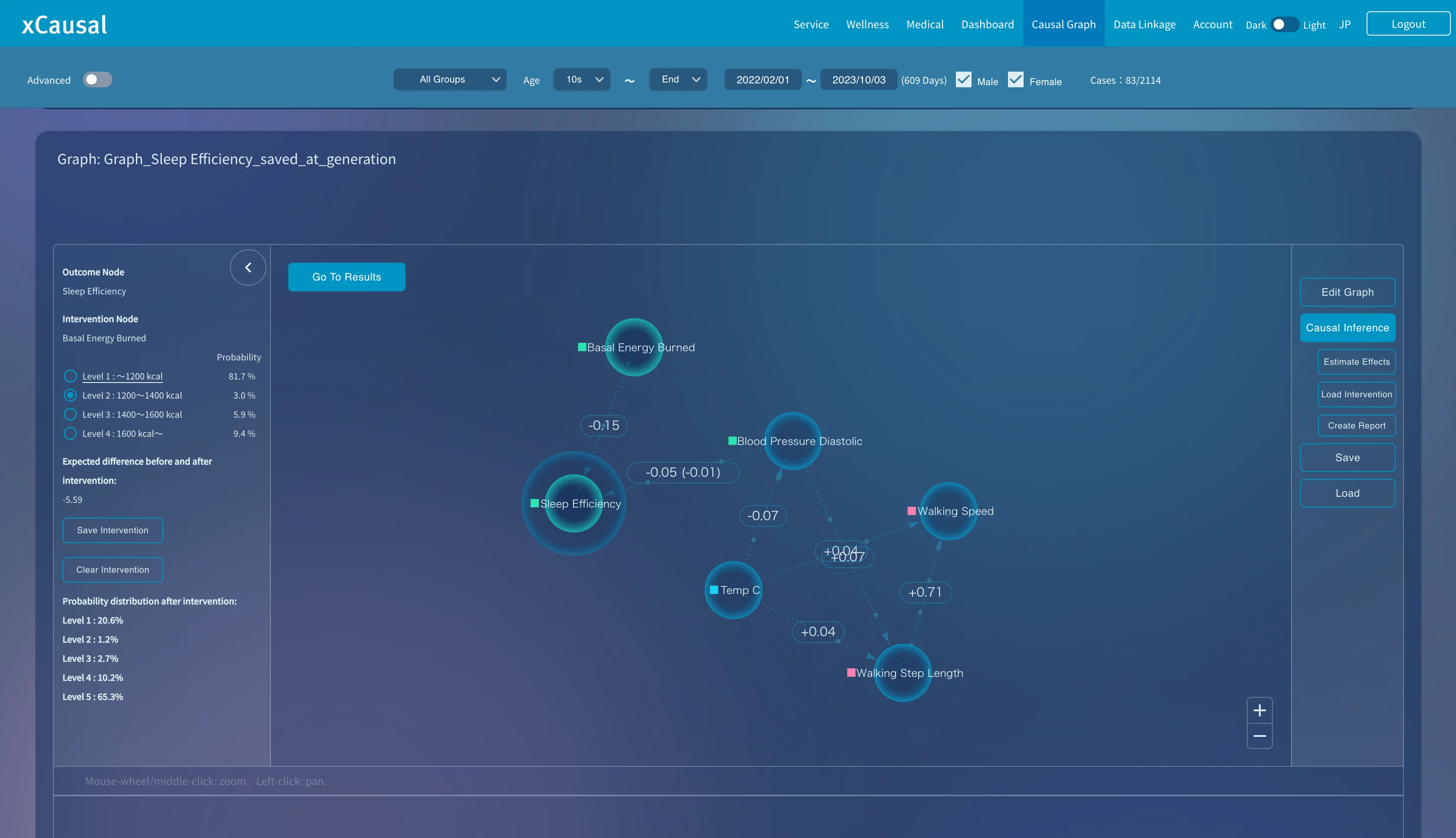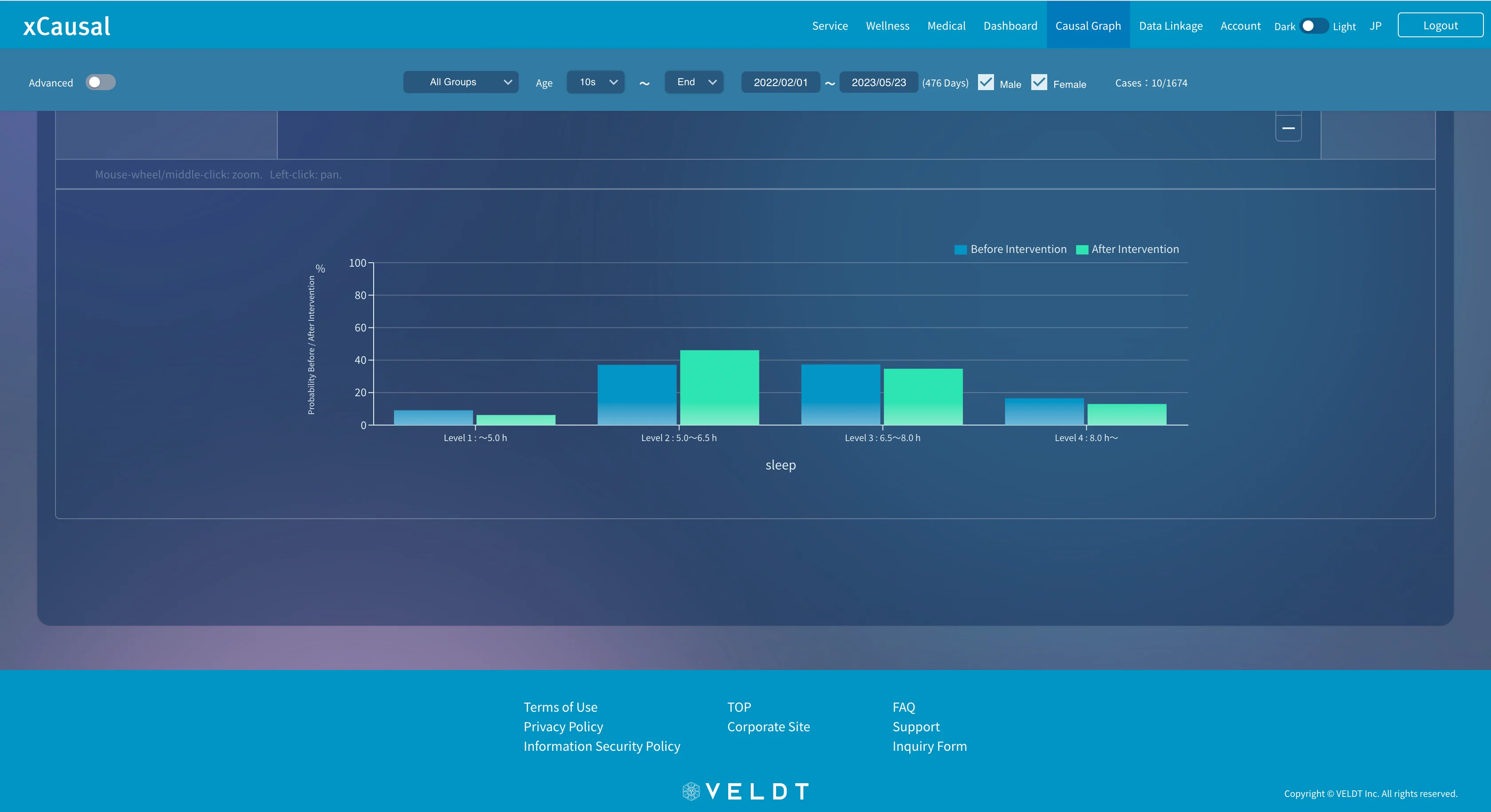
Causal AI Assistant
Digitizing Expert Knowledge to Accelerate Innovation
Integrating the strengths of AI agents and Causal AI
Announcing Causal AI Assistant : AI-Powered Expertise from Highly Skilled Professionals
The "Causal AI Assistant." An innovative solution that models the knowledge of highly skilled experts and specialists as causal relationships, enabling its digital utilization within organizations.
Announcements can be found hereUPDATE
xCausal responds to these concerns.
Unable to discover the cause of
issues using data.
Discovering cause candidates and estimating effects leads to quick solutions and actions.
R&D and product planning are not
progressing due to lack of data analysts.
Can easily discover hypotheses even not a data analysis professional.
Want to systemize the personal
know-how and make it usable.
Tacit knowledge within an organization can be capitalized as causal models.
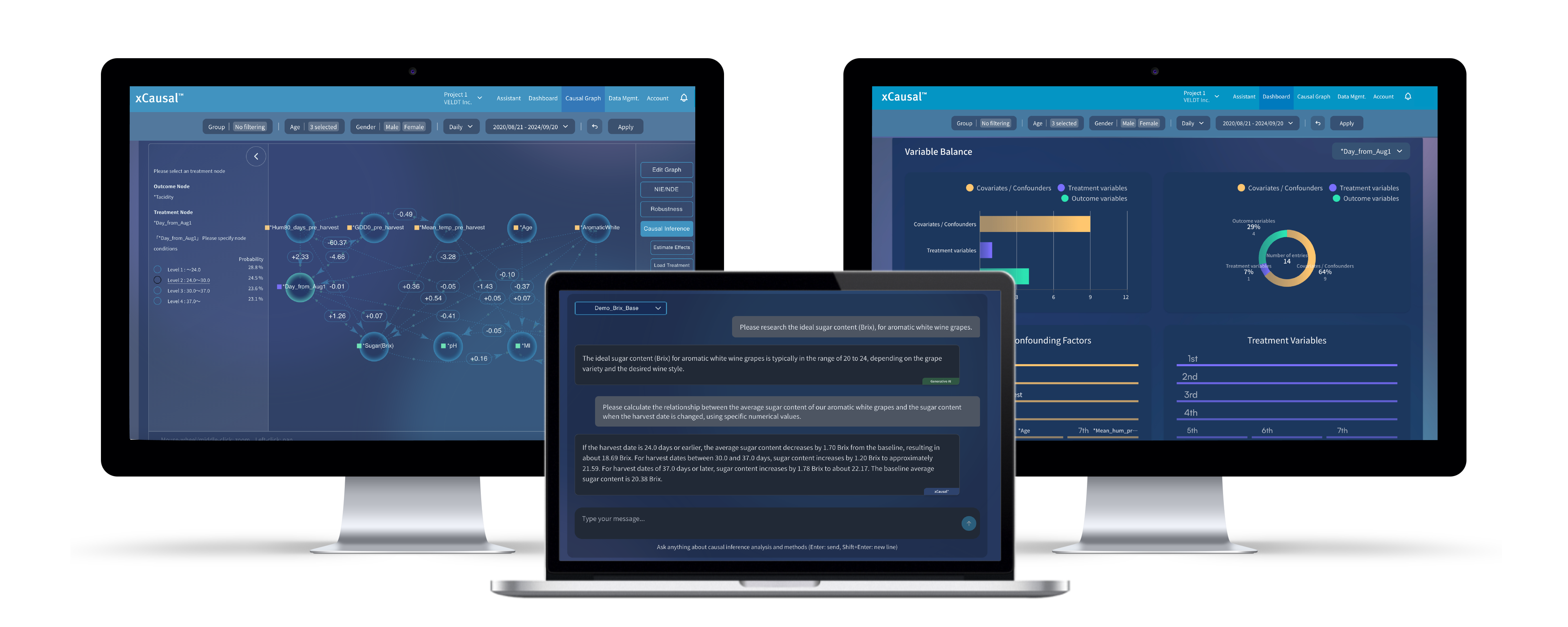
Trusted Composite AI Solutions
We provide trusted composite AI solutions based on Causal AI
Generative AI can produce a variety of content in different languages and multimodal formats, but it is important to be aware of certain issues when using it, such as hallucinations that generate answers that differ from reality, “Potemkin Understanding” (pretending to understand) where concepts can be explained but mistakes are made in practice, and calculation errors. These phenomena occur because generative AI generates plausible characters and data based solely on probability, based on what it has learned.On the other hand, the weakness of commonly used foundational AI technologies such as machine learning and deep learning is that they are black box technologies which cannot explain why the results were produced, even though they can perform tasks such as prediction and classification with high accuracy.
The reason for this is that the foundational AI technology finds patterns based solely on correlations and applies them. Our company provides “Trusted Composite AI Solutions” that complement generative AI and foundational AI, with a focus on “Causal AI,” which is a third emerging AI field that is explainable and understands “why.”
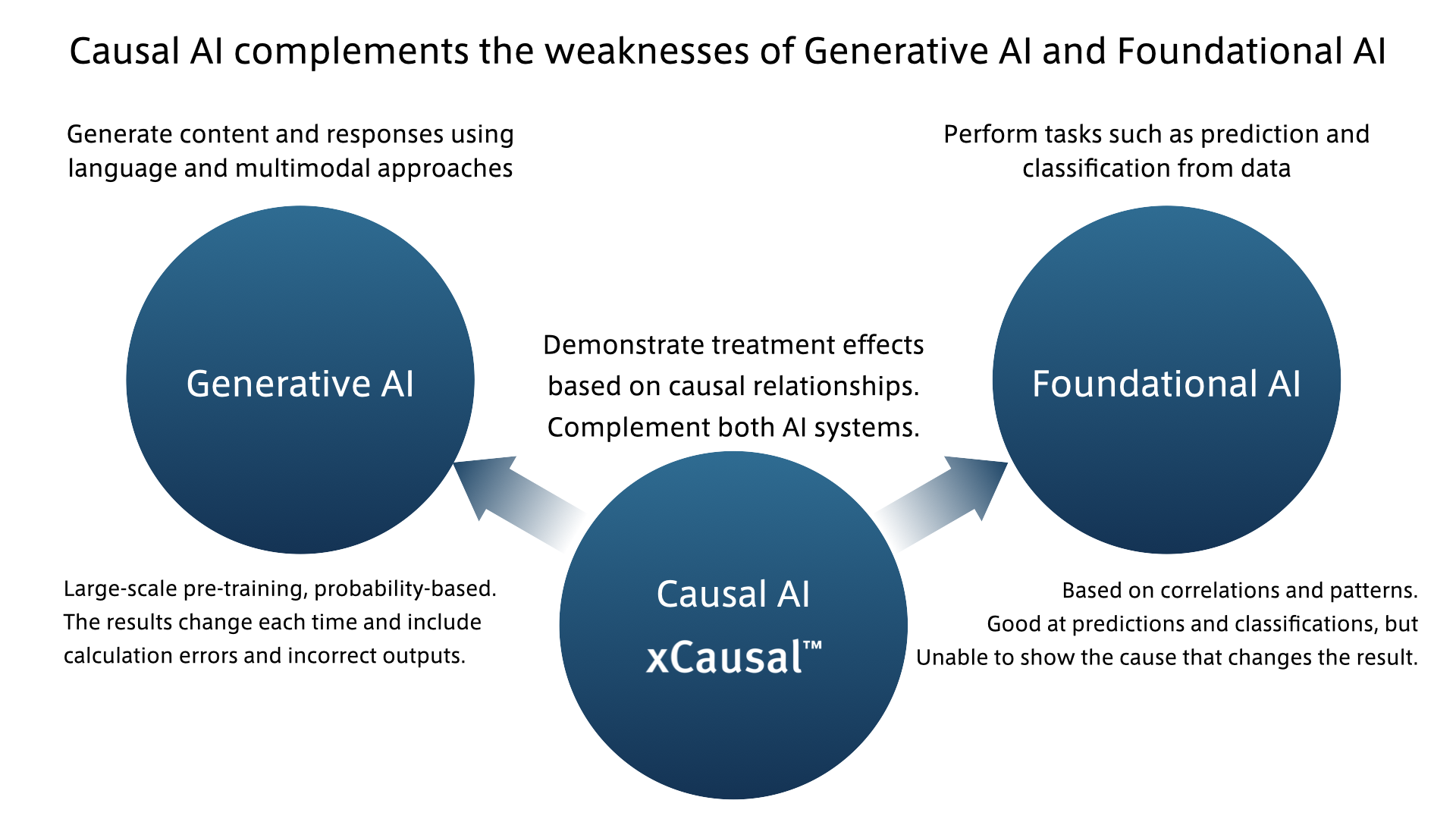
Causal AI SaaS platform
Causal AI (AI based on cause-and-effect relationships)
identifies causes and drives action
Even when data is visualized and predictive models are created to solve business issues, there are no discoveries that lead to action. This is a surprisingly common issue when adopting DX and AI. The key is to understand the "causal relationship". While AI excels at discerning patterns based on data correlations, it often falls short in elucidating why certain outcomes occur.Conventional AI recognizes and utilizes patterns based on correlations in data, so while it can make predictions and classifications, it is unclear why it arrived at those results. On the other hand, in business, it is important to find out what to do to improve results, that is, to understand the causes and identify actions.
Causal AI aims to understand the causal mechanisms behind correlations and answer questions such as "Why does this result occur?" Through structural causal models (SCMs), it becomes possible to understand how intervening in one variable affects another variable.
xCausal is a revolutionary tool that can quickly estimate causal mechanisms from data based on Structural Causal Model.
We have innovated areas that were previously difficult to use, requiring academic expertise and programming skills to obtain evidence. xCausal can simulate the effects of interventions in business and research settings and answer "what-if?" questions. AI x Causal (AI enhanced by causality). This tool empowers the realization of "Trusted AI," paving the way for a brighter future.
※ In addition to expert knowledge in the target field,
it is necessary to prepare variables (data) containing covariates required for the model.
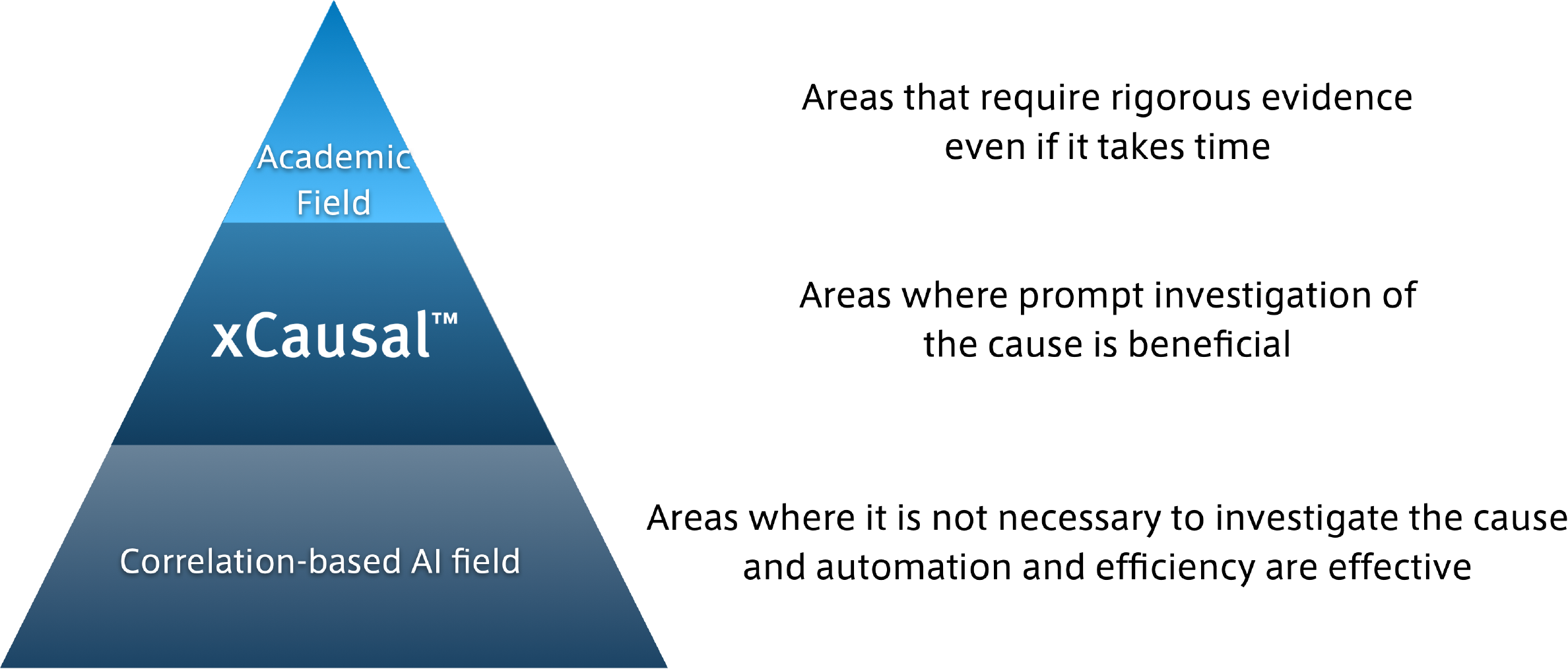
Why we should know causation beyond correlation and how to do it
"When the rooster crows, the sun rises" is an example of prediction based on correlation. However, even if the rooster is gone, the sun will still rise. In other words, this relationship is not causal. Thus, current AI recognizes patterns by using both causal and non-causal variables. There are many applications where this method is fine. On the other hand, in areas such as business and R&A, it is often important to find out what can be done to improve outcome and take action. This means that it is important to understand the cause-and-effect that are influencing the results. For example, even if the correlation is high and it appears to be a cause-and-effect relationship, in reality there are many cases where a common cause "confounding factor" that affects both variables is creating a "spurious correlations." A well-known example is the story that ice cream sales correlate with the number of people drowning in pools. However, ice cream sales are not causing more people to drown in pools, nor is the opposite true. Behind this lies a factor affecting both—such as temperature increases due to seasonal changes—which could be called the confounding factor. To derive solutions and necessary actions from data, correctly understanding causal relationships is the key to success.
There is one important thing here. Correlation can be simply observed between two variables, but causation inherently requires knowing the difference in outcomes between when something is done (called a treatment or intervention) and when it is not, while holding all other conditions constant. In other words, it cannot be inferred with just two variables. Therefore, randomized controlled trials, which theoretically control for other conditions by randomization, are considered the gold standard for understanding causal relationships. However, it requires preparation and costs money, and there are cases where it cannot be done for ethical reasons, so it cannot be considered a readily available method. Therefore, the field of "causal inference" has developed, which estimates causal effects by adjusting for the influence of important factors under certain assumptions. Causal AI, which combines this theory with AI technology, is gaining traction as a practical approach to solving societal challenges. We are innovating in this complex field to make it as accessible and user-friendly as possible.
Correlation is not causation
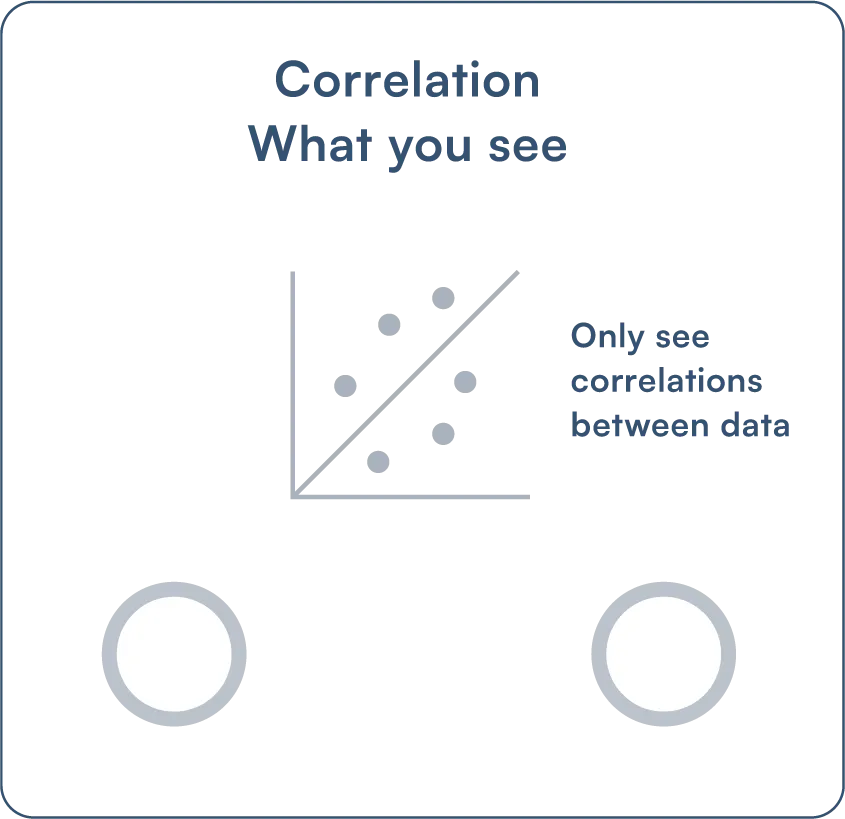
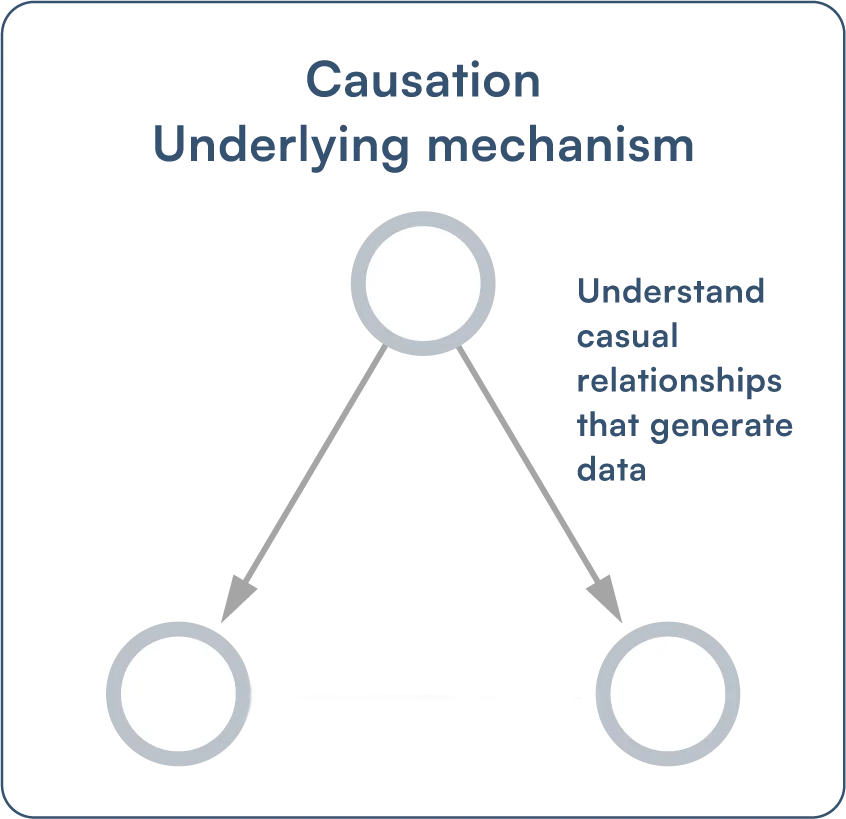
Why xCausal™ ?
"Smallytics™" which makes "Causal Discovery" easy to use, “CKE-LLM” (Causal Knowledge Extraction LLM) which improves its reliability.
Discovering the structure of causal relationships from data is called "Causal Discovery," and estimating causal effects is called "Causal Inference." When the structure of the causal relationship is known, "Causal Inference" can be conducted promptly. However, in many cases, uncovering unknown relationships drives innovation. In such instances, "Causal Discovery" proves to be a valuable tool. Yet, until now, this approach has been impractical due to the substantial increase in processing time required to compute all data combinations when estimating causal structures. With xCausal™, our Smallytics™ algorithm recommends variables that are causally related to the data you are analyzing from a variety of time series data combinations. This allows users to select and narrow down meaningful variables, and can drastically reduce the amount of combinatorial computation. Causal graphs with network structure can be generated instantly in tens of seconds to minutes. Therefore, users can iterate through trial and error with data to understand cause-and-effect relationships and formulate high-resolution hypotheses for solutions. Users can select from three types of causal discovery algorithms: Score based, constraint based, and hybrid.
In addition, "Causal Discovery" has the weakness that the calculated causal structure is not always correct, regardless of the type of algorithm. Therefore, it is known that pre-setting a causal relationship that is already known prior to the "Causal Discovery" improves the level of confidence. VELDT has developed CKE- LLM (Causal Knowledge Extraction LLM), a technology for extracting causal knowledge using LLM (Large Language Models), based on officially obtained reliable information sources. Extraction results are provided along with a process for people to review and decide whether to use them.
Future-oriented SaaS with highly scalable functionality, Easy to use academic know-how.
"xCausal™" is a SaaS that can be used by uploading data. No difficult programming is required, and everything can be used with a mouse-over or click. Knowledge of the problem you are trying to solve is necessary, but not necessarily as a data scientist. You can also use the CSV checker when uploading data to avoid redoing the process due to incomplete data. After uploading, you can easily complete missing data or create causality rules. Another unique aspect of this tool is that it provides functions that tend to be difficult with an easy-to-understand and sophisticated UI. xCausal™” makes Causal Discovery and Causal Inference quick and seamless, making it easier to use the know-how that has been used in the academic realm up until now.
It is also a future-oriented solution in that, unlike software installed on a PC or used in a client-server format, it is scalable, collaborative in its data analysis, and able to provide ongoing updates and additions of ever-evolving Causal AI functions.
Customization, Accompaniment Professional Services and Partnerships.
Depending on how "Causal Discovery" and "Causal Inference" are utilized, arriving at a viable solution may be challenging. Specifically, without obtaining the data potentially causing the issue, identifying a causal relationship becomes improbable. We provide professional services including consulting, data analysis, and customization to resolve these customer issues. Our advisory committee, comprising professors and associate professors from leading universities and research institutions, conducts cutting-edge research in various data science areas, including causal inference, machine learning, statistical analysis, and LLM, continuously generating new knowledge. Apart from customizing xCausal™ functionality, the system also facilitates diverse development avenues, such as applying outputs from causal models, integrating them with predictive models, and utilizing them alongside generative AI. Moreover, we aim to enhance our contribution to resolving client issues by collaborating with partner companies possessing expertise across diverse industries and domains in the near future.
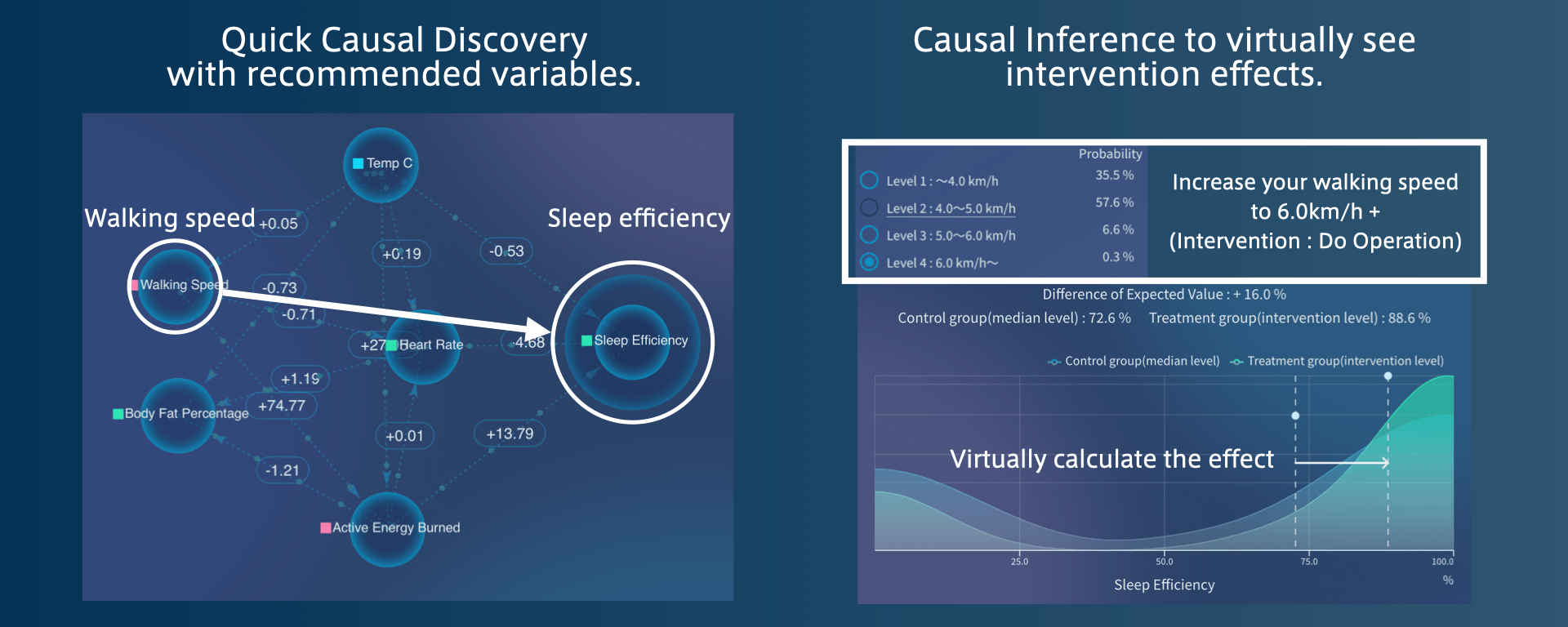
Usage
xCausal can be customized and used in a variety of industries, including the wellness and healthcare industry, where there is a need to investigate causes and identify solutions.








- Wellness and healthcare
- Acceleration of R&D
- Drug discovery in the pharmaceutical industry
- Reduction of GHG emissions
- Customer satisfaction improvement and churn management
- Optimization of promotion budget (MMM)
- Quality improvement, failure prediction, and accident rate reduction in the manufacturing industry
- Operational volume prediction and supply chain optimization in the transportation and retail industries
- Fraud detection, new product development at financial institutions and insurance companies
- Smart city planning and operation, EBPM by governments and local governments
How To Use
In addition to basic services, xCausal offers various customization options and is effective in supporting business decision-making and problem-solving. Examples include enhancing manufacturing quality, reducing accident rates, optimizing supply chains, improving customer satisfaction, managing churn, optimizing marketing mix models, and detecting fraud.
We also provide services for the wellness and healthcare sector. It supports the collected lifelog data from users to provide collaborative apps, ready-to-use dashboards and causal inference services.
Service Overview and Usage
xCausal is a SaaS-style service for causal inference.
After uploading and setting up your data, you simply use the service in the following steps.

Select Analysis Item
Select the data items to be analyzed and use our relationship strength detection algorithm, "Smallytics™", to select the analysis targets.
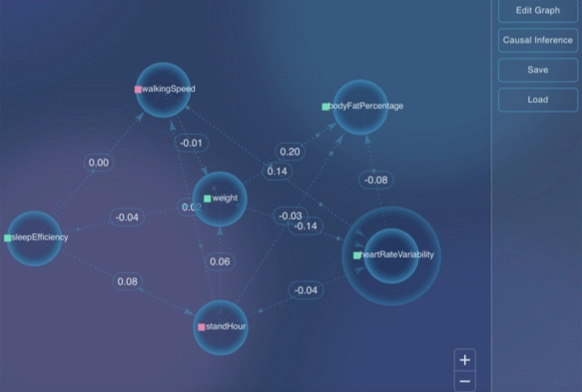
Generate a causal graph
Generate a causal graph, observe its structure, and select nodes of interest that may have an influence.
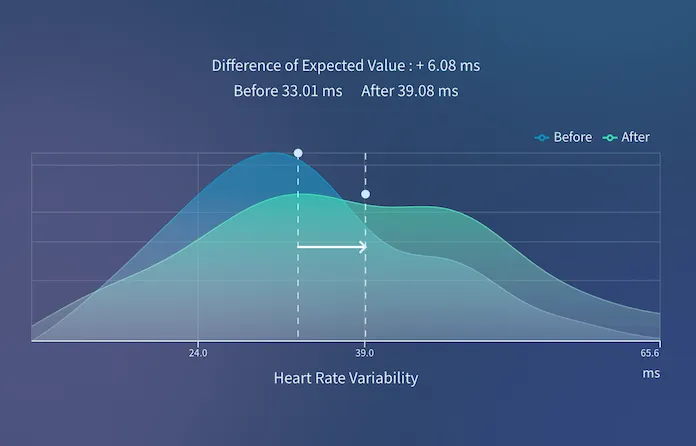
Virtual verification of causal effects
Mouse over the node and click on it. Mouse over the node and virtually change the value (intervention) to predict the distribution after the intervention for analysis purposes.
Screen Images of xCausal
Innovation accelerating with causal relationship simulation
Companies and research institutes routinely create hypotheses for solutions to problems and research themes, and search for solutions while testing them. In particular, in R&D departments and planning departments, human resources with advanced knowledge repeat long verification cycles after discovering a correlation until a certain level of evidence is obtained. This process takes months to years.
Obtaining evidence is essentially about demonstrating the causal effectivity of a solution. xCausal integrates cutting-edge causal structure search technology with our proprietary expertise to generate a digital replica of causal relationships. This enables us to conduct virtual trial-and-error experiments rapidly, continuously refining our approach minute by minute. Such iterative testing facilitates early failure experiences and leads to more refined hypotheses through methods like stratification. This accelerates the R&D cycle, boosts success rates, and optimizes the utilization of highly skilled human resources.


